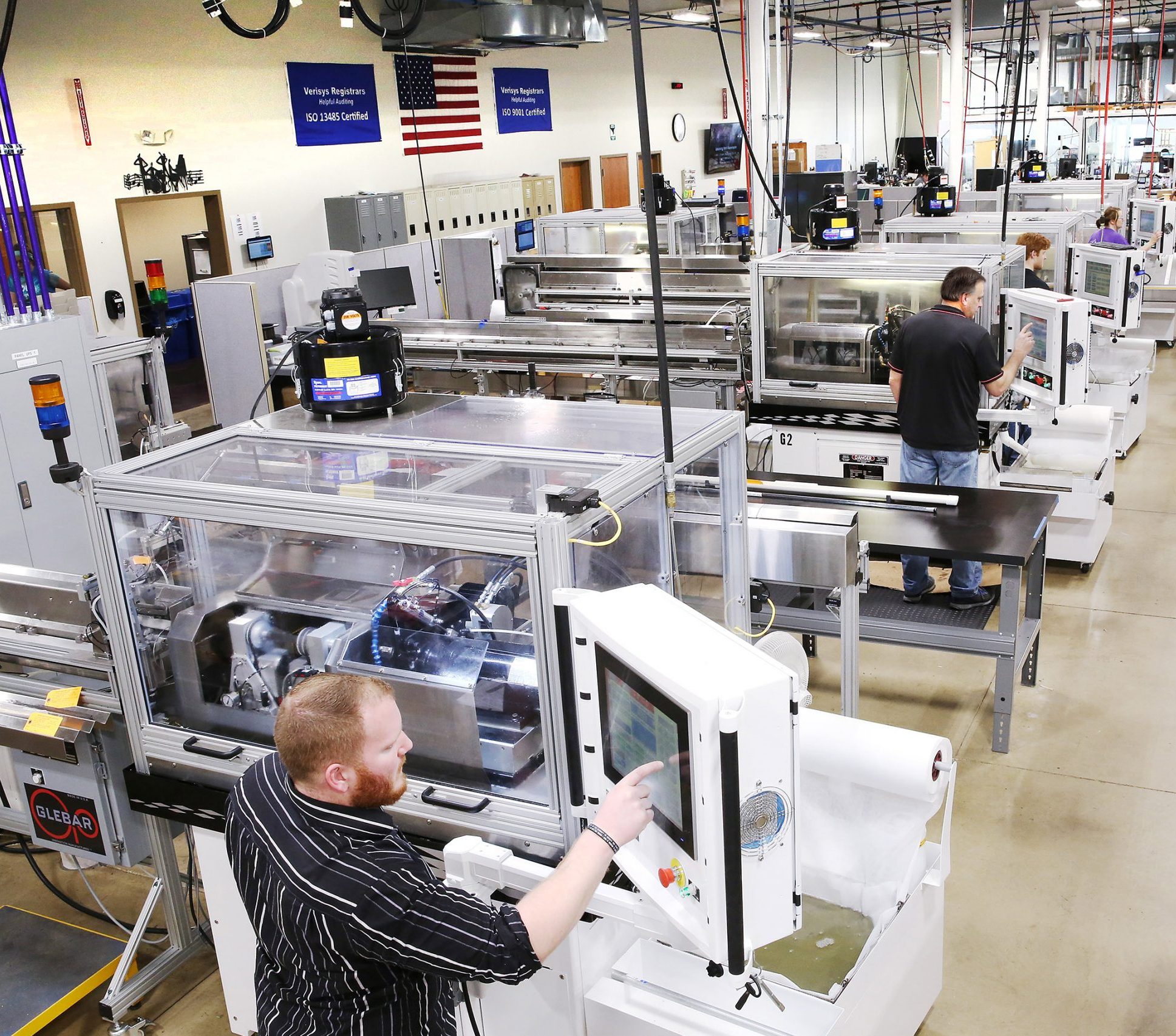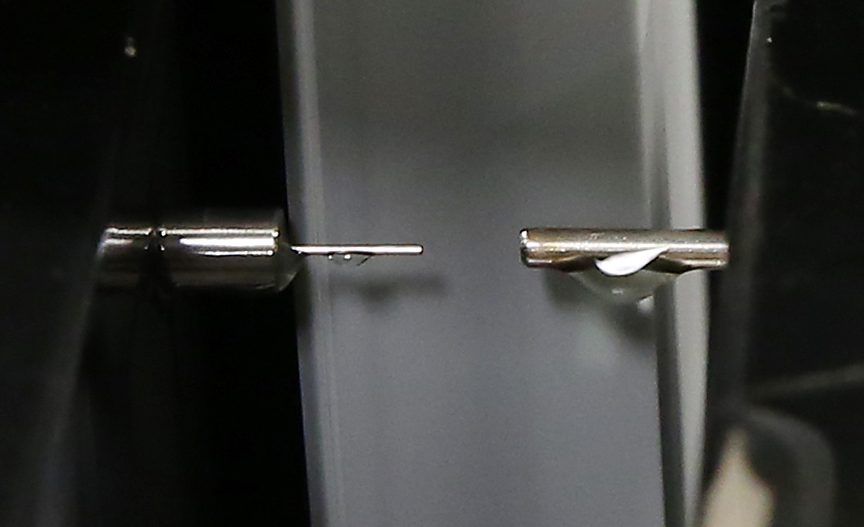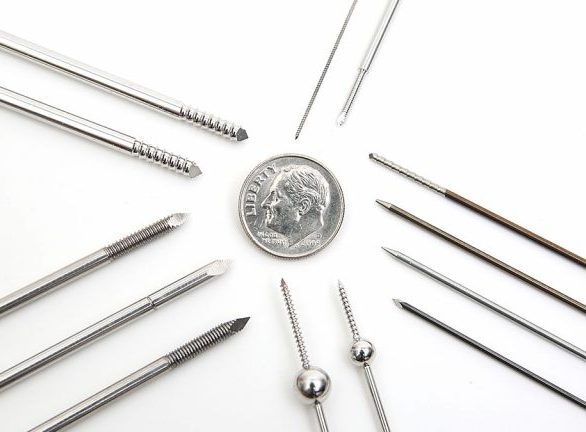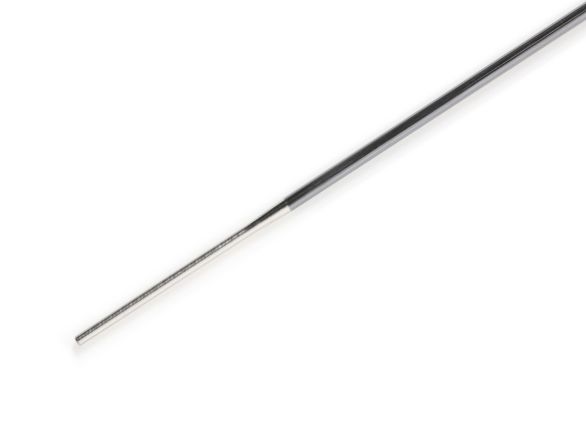Micro-grinding has been growing as an aspect of advanced medical component manufacturing technology. As machines have become more sophisticated with the development of rigid machining tools, so too has the art of micro-grinding. Companies that specialize in this type of machining have emerged as important players in medical component manufacturing.
The Micro-Grinding Process
 Micro-grinding is a tool-based machining process that creates micro-features on hard, brittle materials. It uses a large tool to create minute details, which makes it an extremely important process when a product requires precise specifications, such as in the medical industry. Doctors need equipment—such as catheters, pins and wires for angioplasty and other procedures—that enable them to navigate or insert tools in the exact right place. Micro-grinding can be used on many different types of materials, including glass and plastic, but the primary focus for companies that work with the medical industry is on metallic materials such as steel, titanium and nitinol.
Micro-grinding is a tool-based machining process that creates micro-features on hard, brittle materials. It uses a large tool to create minute details, which makes it an extremely important process when a product requires precise specifications, such as in the medical industry. Doctors need equipment—such as catheters, pins and wires for angioplasty and other procedures—that enable them to navigate or insert tools in the exact right place. Micro-grinding can be used on many different types of materials, including glass and plastic, but the primary focus for companies that work with the medical industry is on metallic materials such as steel, titanium and nitinol.
CWT’s Grinding Services support a wide range of materials and coatings to produce some of the most challenging geometries for medical components on the market today. Our equipment is perfect to grind complex medical components; including flats, radius tips, points, and non-linear shapes.
Here are some examples of medical products that require precision micro-grinding as part of the manufacturing process.
Core Wire and Guidewire Grinding
 Device delivery systems generally require navigation through tortuous human anatomy. Micro-grinding is one of the only ways to make this a possibility. With centerless grinding, achieving diameters as small as 0.0015” can be a reality. These incredibly small distal profiles allow physicians to access areas of the human brain previously unreachable. Furthermore, these complex geometries can be included on core wires used in transseptal access systems. Thus making micro-grinding a critical component in the manufacturing of today’s devices and a necessity in the development of the next generation of devices coming to market.
Device delivery systems generally require navigation through tortuous human anatomy. Micro-grinding is one of the only ways to make this a possibility. With centerless grinding, achieving diameters as small as 0.0015” can be a reality. These incredibly small distal profiles allow physicians to access areas of the human brain previously unreachable. Furthermore, these complex geometries can be included on core wires used in transseptal access systems. Thus making micro-grinding a critical component in the manufacturing of today’s devices and a necessity in the development of the next generation of devices coming to market.
Orthopedic Wires
 Orthopedic wires can be quite complicated and require very individualized manufacturing processes. Kirschner wires (k-wires), Steinmann pins and olive wires all are types of wires used in orthopedic surgeries as components or fasteners for hand and foot surgery. They are literally holding patients’ bones together, so they need to be precise—both in design and tolerance. Micro-grinding is the only way to obtain the type of precision required. Manufacturers use the highest quality of equipment to produce custom-designed orthopedic wires for the desired results.
Orthopedic wires can be quite complicated and require very individualized manufacturing processes. Kirschner wires (k-wires), Steinmann pins and olive wires all are types of wires used in orthopedic surgeries as components or fasteners for hand and foot surgery. They are literally holding patients’ bones together, so they need to be precise—both in design and tolerance. Micro-grinding is the only way to obtain the type of precision required. Manufacturers use the highest quality of equipment to produce custom-designed orthopedic wires for the desired results.
Mandrel Grinding
 Customized medical devices can necessitate customized mandrels, which are used for catheter development such as reflow efforts that often have unique designs. Specialized manufacturers can accommodate specialty wire mandrels and wire stylets at their customers’ request. In many cases, mandrels address very specific needs, such as tapers or steps with multiple taper levels and very tight tolerances. These mandrels can be coated with PTFE to aid in the manufacturing of the catheter shafts and sheaths.
Customized medical devices can necessitate customized mandrels, which are used for catheter development such as reflow efforts that often have unique designs. Specialized manufacturers can accommodate specialty wire mandrels and wire stylets at their customers’ request. In many cases, mandrels address very specific needs, such as tapers or steps with multiple taper levels and very tight tolerances. These mandrels can be coated with PTFE to aid in the manufacturing of the catheter shafts and sheaths.
Nitinol Products

Medical device companies eager to come up with new innovations based on nitinol’s unique properties are often met with challenges while working with the material as it is difficult to machine by milling or turning. Excellent results can be achieved through abrasive techniques such as centerless grinding, but manufacturers should expect a high degree of tool wear due to nitinol’s titanium component, which makes the material extremely tough and abrasive. Silicon carbide and aluminum oxide grinding wheels made from premium materials are considered best practice for mitigating these issues.
Hypotube Grinding
 The ends of hypotubes require the grinding of sharp tips, tapers and steps. The ability to hold tight tolerances is a critical requirement. CWT frequently holds diameter tolerances as tight as 0.0002” and wall thicknesses as small as 0.001” to produce step and tapered hypotubes for optimal vascular access. The micro-grinding process is complex and varied, which is why companies prefer to rely on those who excel at it. When it is performed well, however, it can turn a good component into an excellent component that performs beyond expectations. The ability to offer this service in-house is an advantage that results in increased workflow efficiencies and superior product quality.
The ends of hypotubes require the grinding of sharp tips, tapers and steps. The ability to hold tight tolerances is a critical requirement. CWT frequently holds diameter tolerances as tight as 0.0002” and wall thicknesses as small as 0.001” to produce step and tapered hypotubes for optimal vascular access. The micro-grinding process is complex and varied, which is why companies prefer to rely on those who excel at it. When it is performed well, however, it can turn a good component into an excellent component that performs beyond expectations. The ability to offer this service in-house is an advantage that results in increased workflow efficiencies and superior product quality.
LET’S CONNECT!
To learn more about how Custom Wire technologies can serve you and your business, be sure to reach out! We look forward to hearing from you and learning how we can be of service.



